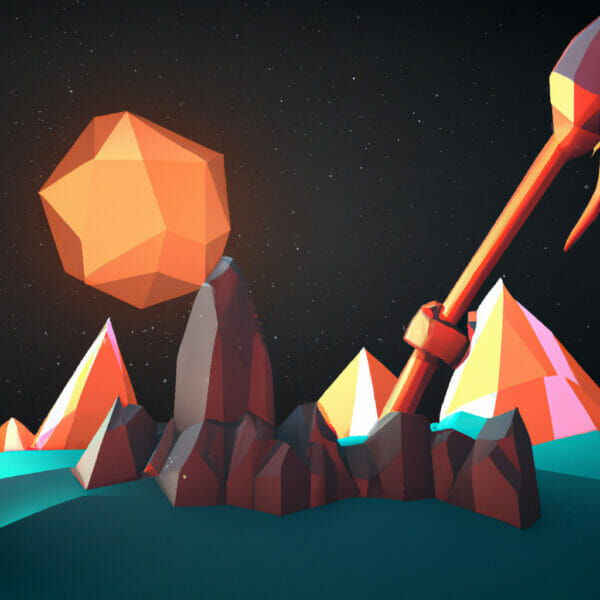Learning about physics in Roblox is nothing short of exciting. It allows you to breathe life into your virtual creations, providing them with rules akin to our real world. With knowledge of Roblox physics, you can create dynamic, immersive, and realistic worlds that captivate your players and set your games apart.
Table of contents
What is Roblox Physics?
Roblox Physics is a built-in Roblox Studio feature set that allows you to create objects that interact realistically with their environment. This includes gravity, collisions, object dynamics, and forces, to mention a few.
Why Should You Learn It?
Gaining an understanding of Roblox Physics offers significant benefits. Leveraging these tools can help you:
- Enhance the realism of your games.
- Create more engaging and interactive virtual environments.
- Develop problem-solving skills as you work out the physics of your game.
- Stand out in the large Roblox developer community.
Regardless of your coding journey’s stage, delving into Roblox physics is a step that will significantly elevate and enrich your game development experience.
Understanding Roblox Physics: Basic Examples
Now we’ll venture into writing code examples to help you understand the basics of Roblox Physics.
1. Creating a Part
Firstly, let’s create an interactive object or ‘part’ in Roblox. For instance, a simple brick.
local newPart = Instance.new('Part')
newPart.Parent = workspace
newPart.Position = Vector3.new(0, 50, 0)In this example, we create a new part, assign it to the Roblox ‘workspace’, and set its position in our virtual environment.
2. Applying Gravity
Bring realism to your game by applying gravity towards the objects. Roblox automatically applies gravity to all parts in the workspace. Once a part is created in a workspace, it will automatically fall due to this gravity.
workspace.Gravity = 196.2We set the workspace’s gravity, where ‘196.2’ is roughly twice the gravity on Earth. So, objects will fall twice as fast.
3. Enabling and Disabling Collisions
Collisions can be enabled or disabled in a Roblox game using the ‘CanCollide’ property.
local newPart = Instance.new('Part')
newPart.Parent = workspace
newPart.CanCollide = falseIn this situation, a new part is created. However, by setting the ‘CanCollide’ property to false, this block wouldn’t create a collision with any other parts in the game.
4. Using Forces
Roblox allows you to apply forces to objects in order to animate them. Let’s add a force to an object so that it moves upwardly.
local newPart = Instance.new('Part')
newPart.Parent = workspace
local bodyForce = Instance.new('BodyForce')
bodyForce.force = Vector3.new(0, 196.20, 0)
bodyForce.Parent = partThis snippet shows how to add an upward force to the part we created. The force is equivalent to the gravity working on the object, resulting in the part floating in the space.
5. Adjusting Velocity
By modifying the velocity property, you can control the speed and direction of an object. For instance, to send an object moving straight up:
local newPart = Instance.new('Part')
newPart.Parent = workspace
newPart.Velocity = Vector3.new(0, 25, 0)Here, we’re creating a part and setting its velocity so that it will move upward at a rate of 25 studs per second.
6. Modifying Friction
Each Roblox object has a ‘Friction’ property which can be adjusted to control the object’s sliding. Here’s an example of how to set the friction on an object to 0, making it slide forever:
local newPart = Instance.new('Part')
newPart.Parent = workspace
newPart.Friction = 0This code snippet creates a new part in the workspace, and by setting the ‘Friction’ attribute to 0, it ensures the block will slide without hindrance when a course is applied.
7. Parabolic Motion
With an understanding of control over vertical and horizontal motion, you can apply parabolic motion. Let’s make an object that moves upwards and forward:
local newPart = Instance.new('Part')
newPart.Parent = workspace
newPart.Position = Vector3.new(0, 2, 0)
newPart.Velocity = Vector3.new(10, 15, 0)In this piece of code, we’re giving a newly created part an upward velocity as well as forward velocity, resulting in a classic projectile parabolic motion.
Mastering these Roblox Physics basics is only the beginning. With creativity, you can leverage these skills to create stunning and realistic game environments for players. Remember, every expert was once a beginner; keep experimenting to continue learning and growing.
8. Anchoring Objects
By default, objects in Roblox are susceptible to forces like gravity. But with the ‘Anchored’ attribute, you can make an object immovable. Let’s anchor an object:
local newPart = Instance.new('Part')
newPart.Parent = workspace
newPart.Anchored = trueThis snippet creates a part and assigns it to the workspace. The anchored attribute set to true will keep the object static, no matter what forces are applied.
9. Rotating Objects
We can rotate objects in Roblox using the ‘CFrame’ attribute. Here’s an example:
local newPart = Instance.new('Part')
newPart.Parent = workspace
newPart.CFrame = CFrame.Angles(0, math.rad(45), 0)This example creates a new part and uses the ‘CFrame.Angles’ function to rotate it 45 degrees in the y-direction.
10. Adjusting Elasticity
If you want to simulate bouncy behavior, you can adjust the ‘Elasticity’ property. Below, we mimic a bouncing ball:
local newPart = Instance.new('Part')
newPart.Parent = workspace
newPart.Elasticity = 0.75The ‘Elasticity’ property values range between 0 and 1. A value closer to 1, like 0.75 in this case, makes the object bounce much more.
11. Adjusting Object Mass
You can program objects with differing weights using the ‘CustomPhysicalProperties’ attribute. Let’s create a super heavy block:
local newPart = Instance.new('Part')
newPart.Parent = workspace
newPart.CustomPhysicalProperties = PhysicalProperties.new(1000000, 0, 0, 0, 0)In this code, we create a new part with custom physical properties. The first argument is the density, set to a very high value, resulting in a super heavy object that lesser forces have difficulty moving.
Final Thoughts
Understanding Roblox Physics is crucial for creating engaging and interactive games. By mastering these fundamental concepts and functions, you can bring your vision to life and create a robust and dynamic virtual world. As one of the core components of game development on Roblox, exploring physics enables you to create a more immersive and realistic gameplay experience. Here at Zenva, we believe that learning is an ongoing process – don’t hesitate to experiment and innovate!
Where to Go Next?
Having grasped the basics of Roblox Physics, you might be wondering about the next step in your learning journey. Continuing to build on these foundations and enhancing your understanding of the Roblox platform is essential.
Our Roblox Game Development Mini-Degree is a comprehensive collection of courses, designed to equip you with the skills required to create games with Roblox Studio and Lua. Covering fundamental concepts like level creation, scripting, and more complex systems like melee battle games and first-person shooter games, this program suits learners at various stages of their development journey. Each course focuses on practical, project-based learning that allows you to build a robust professional portfolio along the way.
Alongside our Mini-Degree, Zenva also offers a broad collection of Roblox Courses that cater to a wide array of interests and skill levels. With 250+ supported courses in fields such as programming, AI, and game development, Zenva’s education pathway guides learners from beginner to professional, providing them with the skills and certifications they need to boost their career.
Conclusion
As you venture into the exhilarating world of Roblox physics, it’s crucial to remember that every phenomenon you witness around you can be a source of inspiration for your next in-game creation. By mastering Roblox physics, you’re not just developing a new skill; you’re opening up a world of creative possibility.
Remember, each step, each line of code you write, contributes to your growth as a game developer. Dive deeper into our comprehensive Roblox Game Development Mini-Degree, and continue your game development exploration with Zenva. As they say, the journey of a thousand miles begins with one single step. Get started today!
Did you come across any errors in this tutorial? Please let us know by completing this form and we’ll look into it!

FINAL DAYS: Unlock coding courses in Unity, Godot, Unreal, Python and more.







